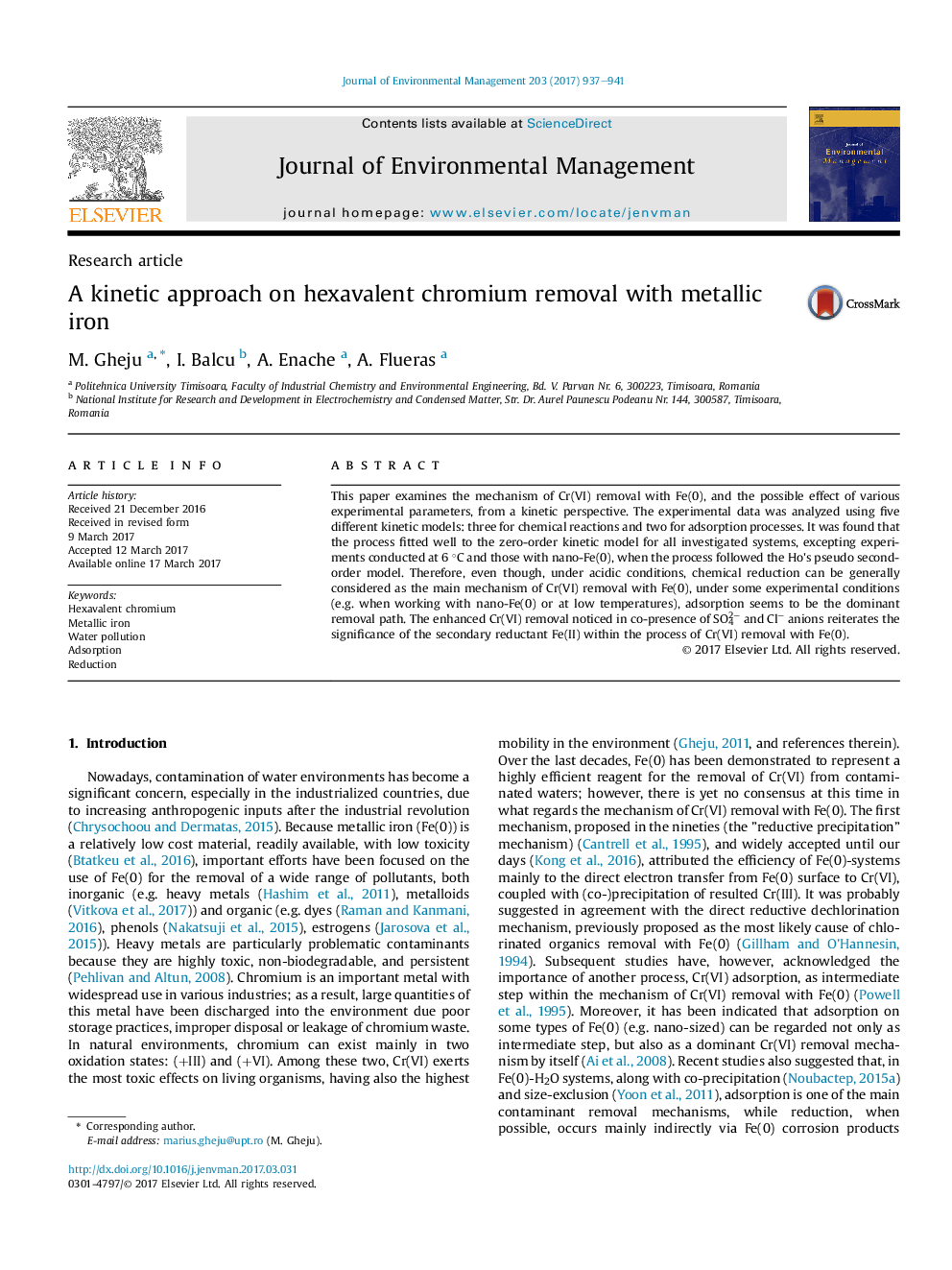| Article ID | Journal | Published Year | Pages | File Type |
|---|---|---|---|---|
| 5116371 | Journal of Environmental Management | 2017 | 5 Pages |
â¢Chemical reduction is generally the main path of Cr(VI) removal with Fe(0) at pH 2.5.â¢Experimental parameters may, however, affect kinetics and mechanism of Cr(VI) removal.â¢Adsorption seems to be the main path of Cr(VI) removal at low temperature.â¢Adsorption seems to be the dominant path of Cr(VI) removal with nano-Fe(0).â¢Relevance of indirect reduction with Fe(II) was emphasized in presence of SO42â/Clâ.
This paper examines the mechanism of Cr(VI) removal with Fe(0), and the possible effect of various experimental parameters, from a kinetic perspective. The experimental data was analyzed using five different kinetic models: three for chemical reactions and two for adsorption processes. It was found that the process fitted well to the zero-order kinetic model for all investigated systems, excepting experiments conducted at 6 °C and those with nano-Fe(0), when the process followed the Ho's pseudo second-order model. Therefore, even though, under acidic conditions, chemical reduction can be generally considered as the main mechanism of Cr(VI) removal with Fe(0), under some experimental conditions (e.g. when working with nano-Fe(0) or at low temperatures), adsorption seems to be the dominant removal path. The enhanced Cr(VI) removal noticed in co-presence of SO42â and Clâ anions reiterates the significance of the secondary reductant Fe(II) within the process of Cr(VI) removal with Fe(0).
